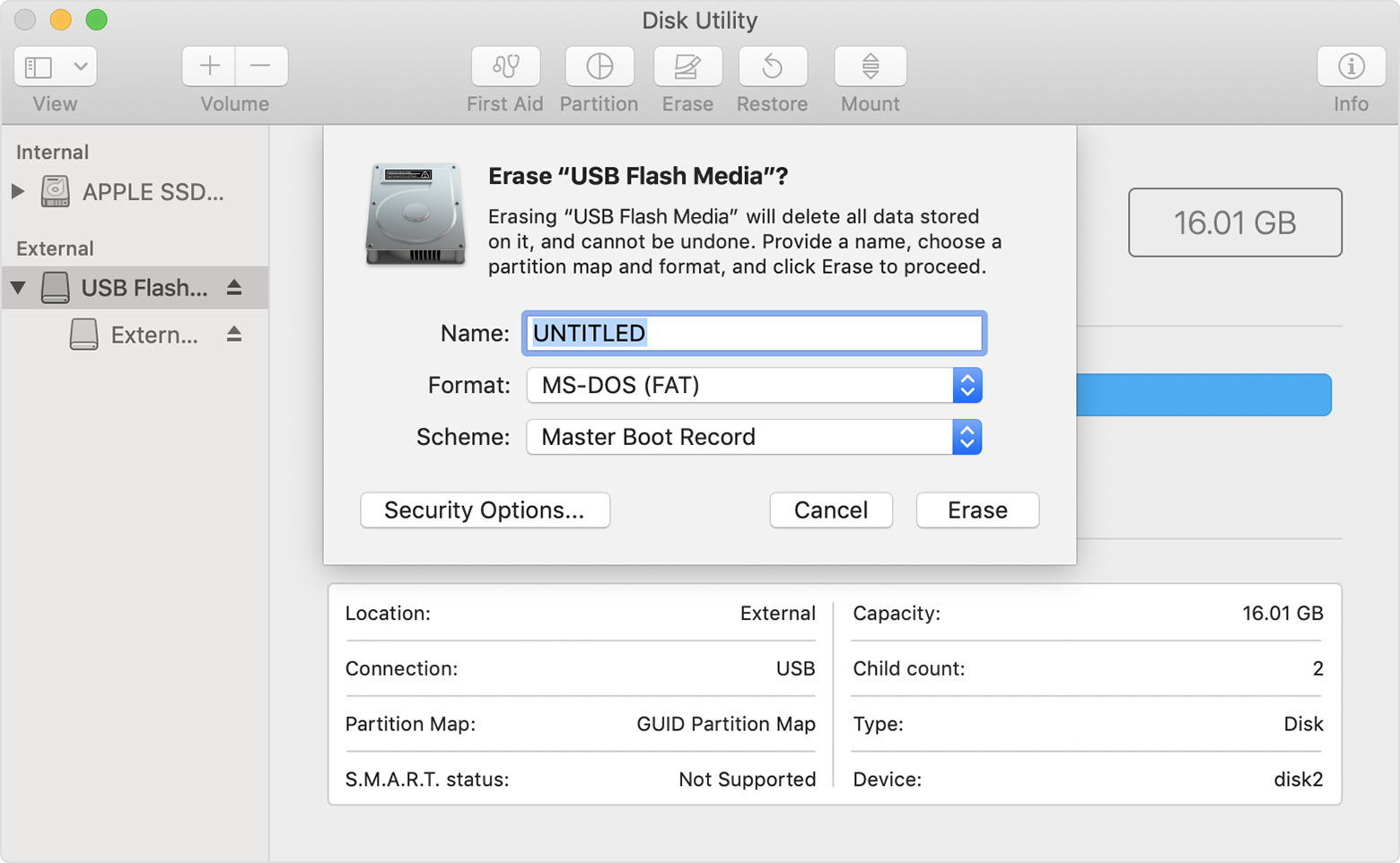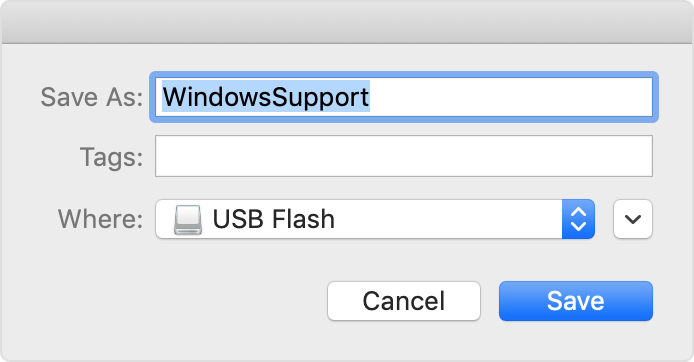Download and install Windows support software on your Mac
After using Boot Camp Assistant to install or upgrade Microsoft Windows on your Mac, you may also need to install the latest Windows support software (drivers) from Apple.
When to install Windows support software
Normally when you install Microsoft Windows on your Mac, Boot Camp Assistant will open the Boot Camp installer automatically, which installs the latest Windows support software (drivers).
If that doesn't happen or you experience any of the following issues while using Windows on your Mac, follow the steps in this article.
Your Apple mouse, trackpad or keyboard isn't working in Windows. (Force Touch isn't designed to work in Windows.)
You can't hear audio from the built-in speakers of your Mac in Windows.
The built-in microphone or camera of your Mac isn't recognised in Windows.
One or more screen resolutions are unavailable for your display in Windows.
You can't adjust the brightness of your built-in display in Windows.
You have issues with Bluetooth or Wi-Fi in Windows.
You've received an alert stating that Apple Software Update has stopped working.
You've received a message stating that your PC has a driver or service that isn't ready for this version of Windows.
Your Mac starts up to a black or blue screen after you've installed Windows.
If your Mac has an AMD video card and is having graphics issues in Windows, you may need to update your AMD graphics drivers instead.
Install the latest macOS updates
Before proceeding, install the latest macOS updates, which can include updates to Boot Camp.
Format a USB flash drive
To install the latest Windows support software, you need a 16 GB or larger USB flash drive formatted as MS-DOS (FAT).
Plug the USB flash drive into your Mac.
Open Disk Utility, which is in the Utilities folder of your Applications folder.
Choose View > Show All Devices from the menu bar.
From the sidebar in Disc Utility, select your USB flash drive. (Select the drive name, not the volume name beneath it.)

Click the Erase button or tab.
Choose MS-DOS (FAT) as the format and Master Boot Record as the scheme.
Click Erase to format the drive. When it's finished, quit Disk Utility.
Download the Windows support software
After preparing your USB flash drive, complete these steps:
Make sure your Mac is connected to the internet.
Open Boot Camp Assistant, which is in the Utilities folder of your Applications folder.
From the menu bar at the top of your screen, choose Action > Download Windows Support Software, then choose your USB flash drive as the destination to save to. When the download has been completed, quit Boot Camp Assistant.

Find out what to do if you can't download or save the Windows support software.
Install the Windows support software
After downloading the Windows support software to your flash drive, follow these steps to install the software. (If you're attempting to resolve issues with a Bluetooth mouse or keyboard, it may be easier to use a USB mouse or keyboard until these steps have been completed.)
Make sure the USB flash drive is plugged into your Mac.
From File Explorer, open the USB flash drive, then open Setup or setup.exe, which is in the WindowsSupport folder or BootCamp folder. When you're asked to allow Boot Camp to make changes to your device, click Yes.
Click Repair to begin installation. If you receive an alert stating that the software hasn't passed Windows Logo testing, click Continue Anyway.
After the installation has been completed, click Finish, then click Yes when you're asked to restart your Mac.
Find out more
If you can't download or save the Windows support software:
If the assistant states that the Windows support software could not be saved to the selected drive or that the USB flash drive can't be used, make sure your USB flash drive has a storage capacity of at least 16 GB and has been formatted correctly.
If the assistant can't see your USB flash drive, click Go Back and make sure the drive has been connected directly to the USB port on your Mac – not to a display, hub or keyboard. Disconnect and reconnect the drive, then click Continue.
If the assistant says that it can't download the software because of a network problem, make sure your Mac is connected to the internet.
Make sure your Mac meets the system requirements to install Windows using Boot Camp.
If a Mac feature still doesn’t work after updating the Windows support software, search for your symptom on the Apple support website or Microsoft support website. Some features of your Mac aren't designed to work in Windows.
Information about products not manufactured by Apple, or independent websites not controlled or tested by Apple, is provided without recommendation or endorsement. Apple assumes no responsibility with regard to the selection, performance or use of third-party websites or products. Apple makes no representations regarding third-party website accuracy or reliability. Contact the vendor for additional information.